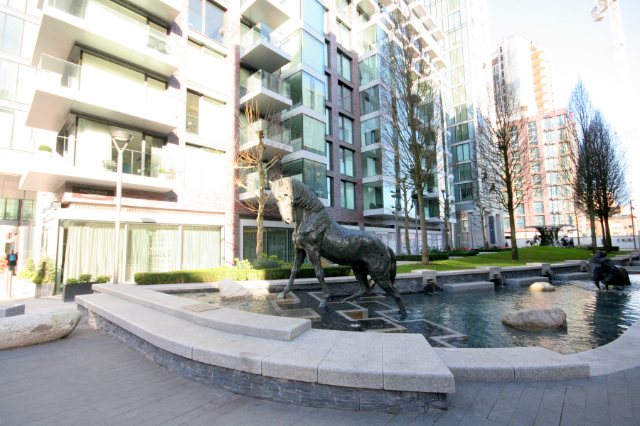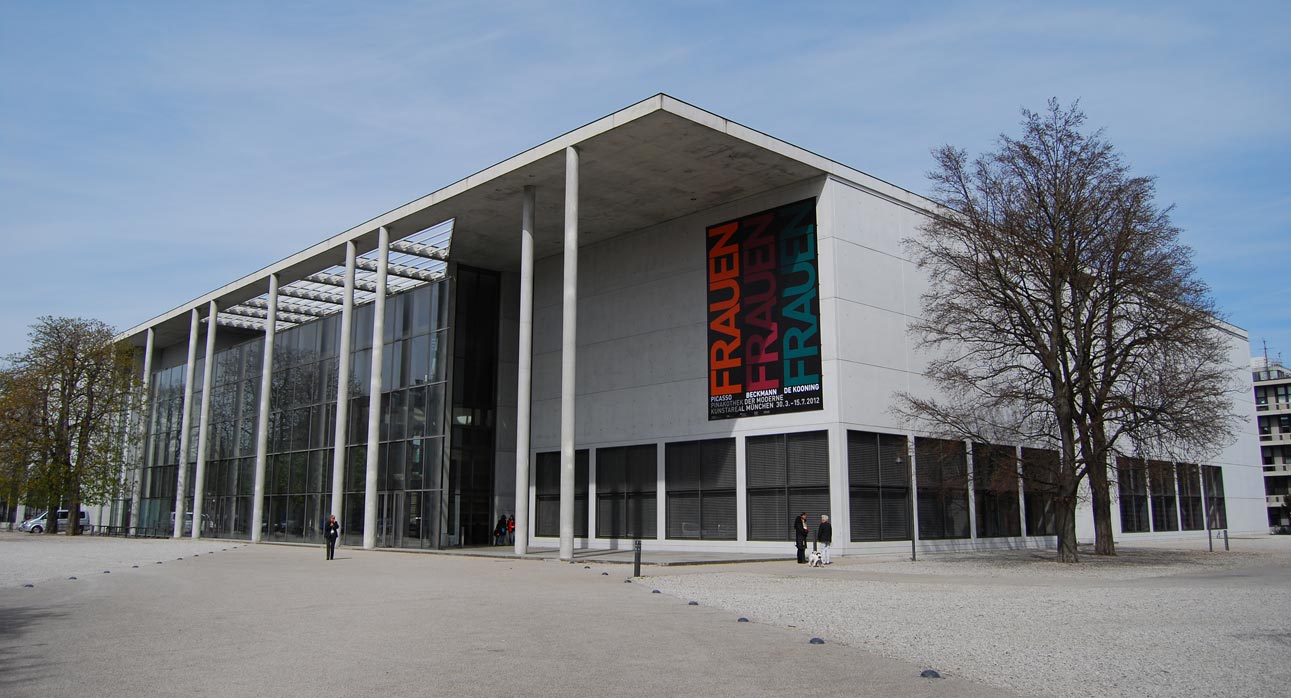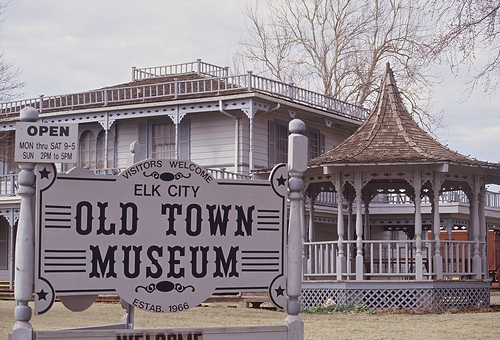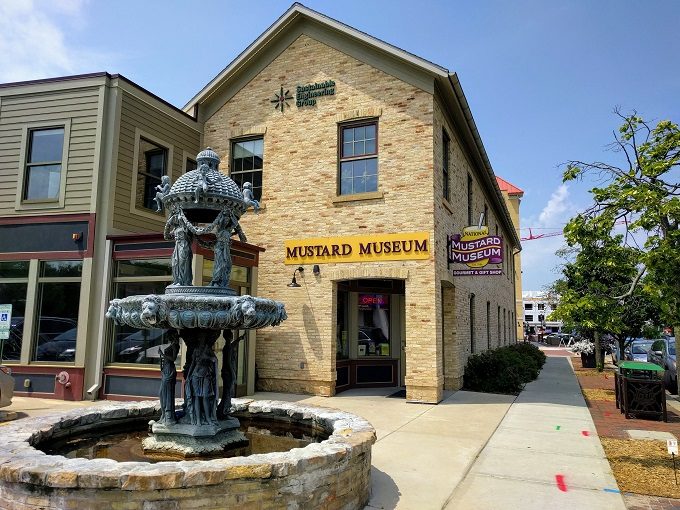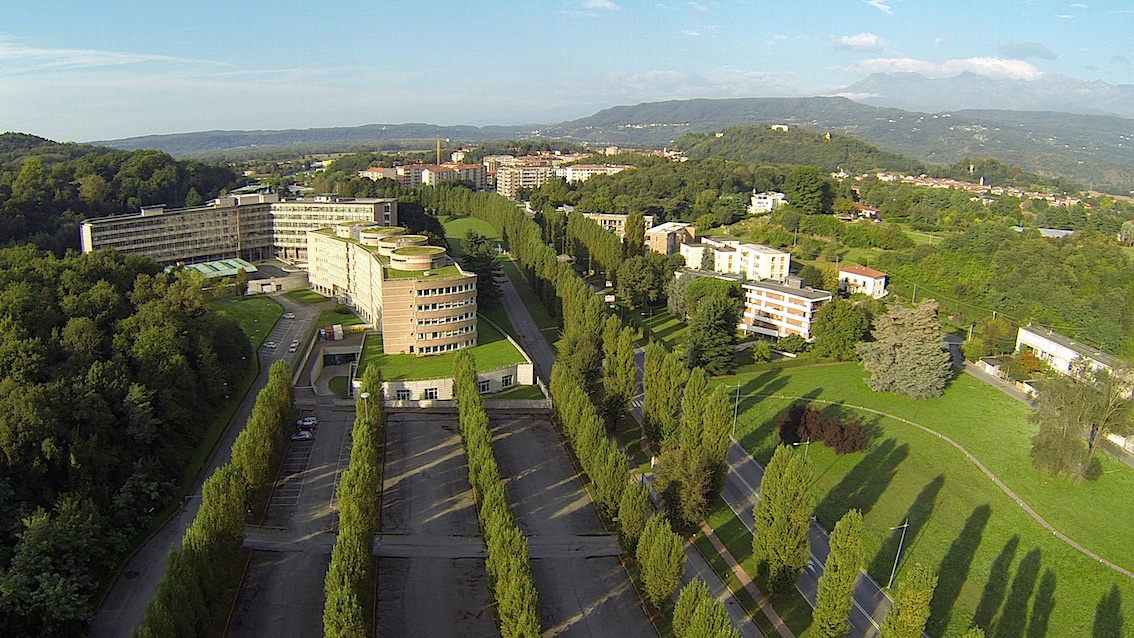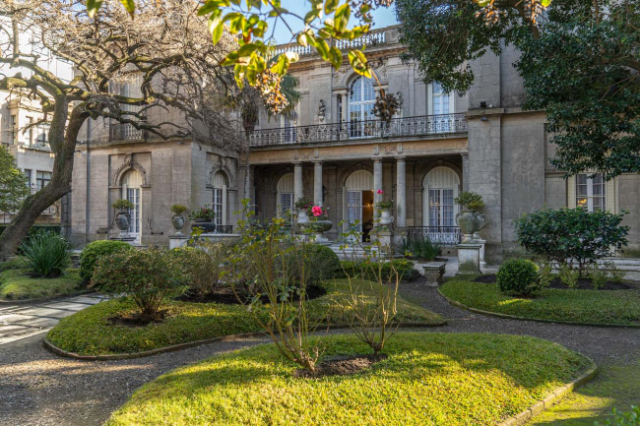The six life-size bronze statues show the freedom and movement of the horses, with sprays of water appearing to spring up as they gallop through the fountain. Some appear to be initially almost hidden among the buildings, with the horses in different poses, including some found in the large fountains, which feature a sequence of small water sprays and lights to create the illusion of realistic movement as the horses gallop through the streets.The plaque reads, "Escaping from their stables, six horses gallop through the streets of London. They hurl themselves through crowds of pedestrians until they are stopped by the flow of traffic on Lemen Street."Nearby Goodman’s Field has an interesting history, written by London historian John Stow in his Survey of London, published in 1598. He gives some details about the area, which included "a farm belonging to the said convent; at that farm, I myself as a young man used to go and get so much milk for a halfpenny, and never had less than three pints of ale for a halfpenny in summer, nor less than a quart of ale for a halfpenny in winter, always warm from the cows, freshly milked and strained. One named Trolop and later Goodman were the farmers there, and they had thirty or forty cows to the bucket. Goodman’s son, being the heir to his father’s purchase, first rented the land for horse grazing, then for gardens, and lived like a lord because of that."It was this written history that inspired the Horses of Goodman’s Fields. The sculptor, Hamish Mackie, portrayed the unbridled joy of horses freed from the drudgery of labor on the streets of London. He included six breeds of horses to illustrate the variety of horses of the past.
